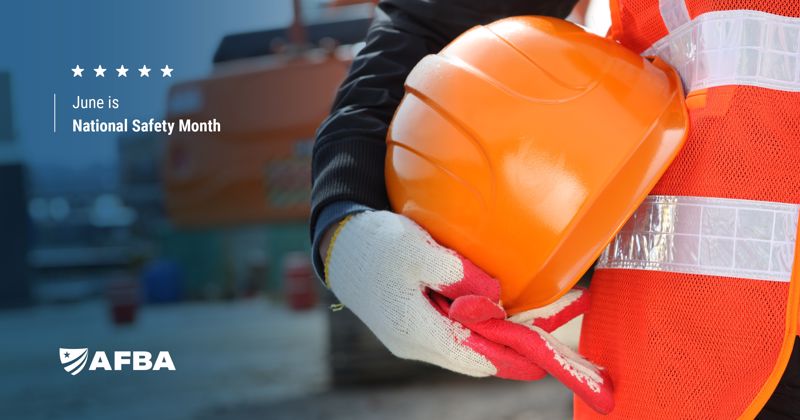June is National Safety Month, when all employers and workers can ensure they’re working as safely as possible. Evaluating workplace safety is crucial for virtually all forms of work, whether you’re a construction worker, EMS employee or have a desk job.
Here, we’ll talk about some recommended ways to stay safe.
Why workplace safety is important for everyone
An unsafe workplace will — sooner or later — cause a range of problems for both the employer and employees.
For the employer, frequent workplace injuries or illnesses can lead to lost productivity and reduced profits at best. Employees are more likely to leave if they’re not satisfied with their working conditions. At worst, it can make you liable if your organization doesn’t follow proper safety standards set forth by the government and results in highly unsafe working conditions.
The employee is directly affected by any health issues the dangerous workplace results in. Generally, such workers are eligible for workers’ compensation, but that can offer limited comfort if you’re experiencing the unpleasant effects of an illness or injury.
It’s in everyone’s best interest to maintain a safe working environment. This starts with education on how to take care of yourself on the job.
 “The appearance of the U.S. Department of Defense (DoD) visual information does not imply or constitute DoD endorsement.”
“The appearance of the U.S. Department of Defense (DoD) visual information does not imply or constitute DoD endorsement.”Basic workplace safety 101
Here are some easy-to-follow tips for staying safe at work.
Wear appropriate protective gear
Helmets, reflective clothing, nonslip sneakers, fire-retardant clothing — whatever you need to stay safe on the job, use it.
Hydrate frequently
If you’re absorbed in your work and lose track of time, you may potentially go for long periods without drinking any water. A lack of hydration can lead to a range of issues, from fatigue to lightheadedness and even fainting. If the opportunity rises (you may have to make time), take the time to stop and have a drink of water.
Prevent injury while working at a desk
Carpal tunnel syndrome, which can sometimes require surgery, occurs when your wrists are bent while you use a keyboard and mouse, causing pressure to mount on your median nerve. An excellent way to prevent this is to use pads both below your keyboard and underneath your mouse so your joints remain straight while working.
It’s also a good idea to get up and move often. Sitting still for too long can cause your shoulders or neck to stiffen and hurt. You might even benefit from mastering desk yoga to keep yourself limber.
To prevent eye strain, use the 20-20-20 rule. Every 20 minutes, take a break from looking at your screen to focus on something 20 feet away for at least 20 seconds. This might mean taking periodic breaks to stand up and gaze out your window for a moment before returning to your desk.
If you’re an EMS worker, take extra precautions
EMS workers are exposed to many different people, and with such exposure comes an extremely high risk of infection. Near the height of the pandemic, EMS agencies reported that almost 27% of their employees had to quarantine at least once, according to an April 2021 survey by the National Association of Emergency Medical Technicians (NAEMT).
Proper use of personal protective equipment (PPE) is necessary to minimize the spread of illness among EMS employees and the people they come into contact with. Gloves, masks and other appropriate gear should be worn when there’s a risk of exposure. All EMS agencies have plans in place depending on the situation, so follow all safety precautions.
Respond to National Safety Month by reevaluating what you can do
National Safety Month is the perfect time to look at whether you’re doing all you can to stay safe in your profession. Incorporate these tips into your daily routine to ensure you stay healthy and injury-free at your job.

